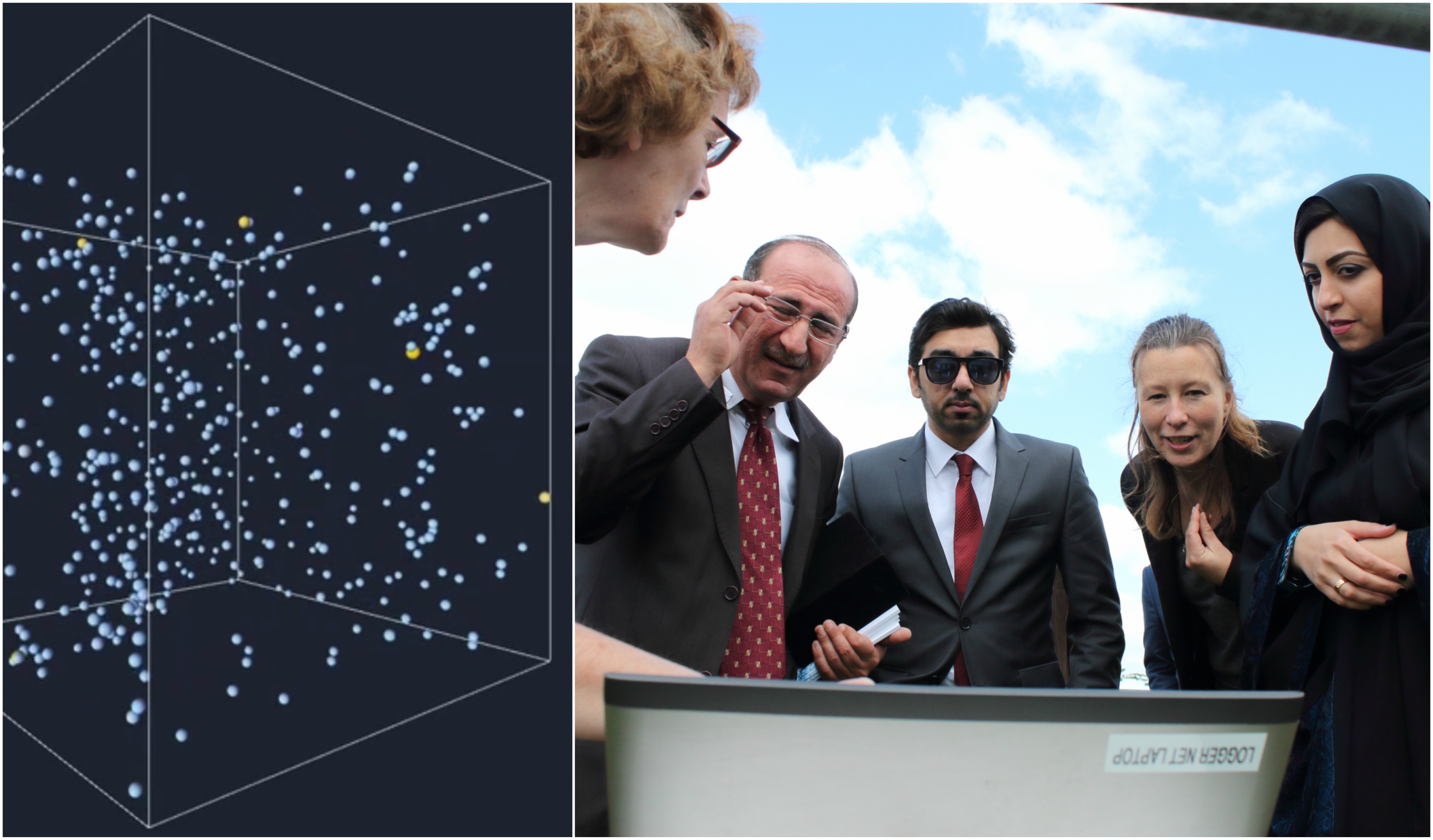See electric clouds research in action
29 August 2017

First highlights from a multi-million-pound project that could influence rainfall were presented to visitors from the United Arab Emirates (UAE) at the University of Reading.
A team of Reading scientists is investigating how spraying electric charge into clouds can induce rain in parts of the world that experience very little rainfall. The team was awarded a share of US $5m by the UAE Research Program for Rain Enhancement Science in January.
Members of the UAE program team flew to Reading to visit its world-leading Department of Meteorology on Thursday 10 August. They were given an overview of the project, including being shown a simulation demonstrating how water droplets collide and merge within clouds, forming larger droplets that fall as rain.
Watch the computer simulation here>>>
“Understanding the role of electric charge in the generation of rain could boost precipitation levels without the use of artificial chemicals" - Professor Giles Harrison, University of Reading
At Reading, the UAE delegation were welcomed by Professor Richard Allan, Head of Department, Professor Ellie Highwood, President of the Royal Meteorological Society and a professor in the Department, and Professor Paul Hardaker, Chief Executive of the Institute of Physics, a visiting professor in Reading.
'New frontiers'
Professor Giles Harrison, Professor of Atmospheric Physics who is leading the University of Reading research team, said: “Understanding the role of electric charge in the generation of rain could boost precipitation levels without the use of artificial chemicals.
“The UAE Research Program for Rain Enhancement Science has already played a major role in allowing international science networks to flourish and identify new frontiers in cloud seeding science and technology. The Program team’s visit to the University of Reading will introduce them to UK activity in areas related to atmospheric science, and I thank them for their invaluable efforts in providing scientists with the support they need to make the most of their ideas."
Currently, the UAE’s National Center of Meteorology and Seismology employ ‘cloud seeding’ technology, where light aircraft are flown close to a cloud to shower it with salt particles that cause droplets to grow quickly until they are large enough to fall as raindrops.
The electric charge method operates by making the droplets stick to each other, again helping the growth rate. This will also be administered by using aircraft, but small remote-controlled aircraft which are battery powered and therefore environmentally friendly.
The research proposal was based on work published in the Quarterly Journal of the Royal Meteorological Society in May 2015. The funding will be provided over three years, with five staff at Reading involved. Two other international groups have also been funded this year, in the US and Finland.
Tackling water security challenges
His Excellency Dr Abdullah Al Mandous is Director of the National Center of Meteorology and Seismology (NCMS), which manages the UAE research program. He said: “The UAE Research Program for Rain Enhancement Science is inspired by the conviction that our common water security and management challenges can only be addressed through knowledge-sharing and cooperation with international partners.
“I am very pleased to discuss our exciting and innovative projects and their future potential with leading UK stakeholders. The UAE is committed to working with such partners for our common benefit. I am sure that our visit will open up new avenues for productive collaboration and confirm the excellent progress that we have already made in advancing rain enhancement science and technology.”
The UAE Research Program for Rain Enhancement Science was launched to address water security challenges in arid regions and beyond, and placing the UAE at the forefront of rain enhancement research. More than 200 research submissions for the funding were received by the research program, representing 710 scientists and researchers affiliated to 316 institutions across 68 countries, on five continents.
